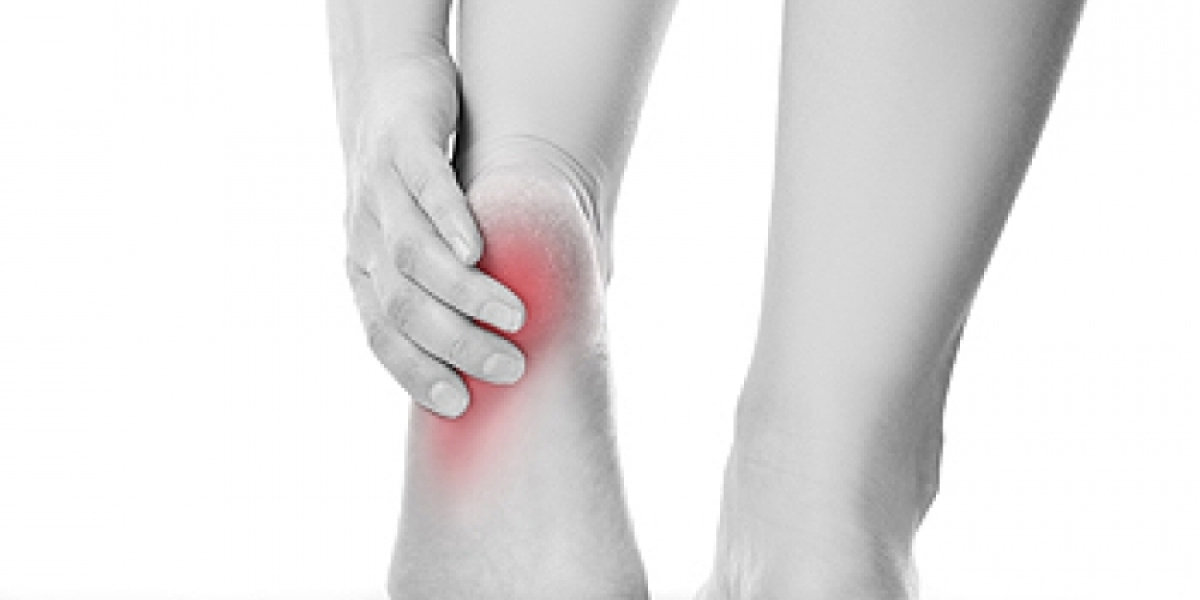Heel pain is a common and often perplexing ailment that manifests in various forms, each with its unique characteristics and causes. This comprehensive exploration aims to unravel the intricacies of heel pain by delving into the diverse origins and distinguishing features of conditions such as plantar fasciitis, Achilles tendonitis, stress fractures, plantar fascia rupture, tarsal tunnel syndrome, and gout. By differentiating these diverse causes, individuals and healthcare professionals can navigate the complex landscape of heel pain more effectively.
1. Plantar Fasciitis: The Arch Nemesis
Plantar fasciitis stands as a predominant cause of heel pain, characterized by inflammation of the plantar fascia, a band of tissue connecting the heel to the toes.
Characteristics:
- Pain Location: Sharp pain at the bottom of the heel, often more pronounced in the morning or after rest.
- Triggers: Prolonged standing or walking, especially after periods of inactivity.
- Associated Symptoms: Stiffness, tenderness along the arch, and potential development of a heel spur.
Diagnosis:
- Clinical evaluation assessing pain location and triggers.
- Imaging modalities like X-rays or ultrasound to visualize the plantar fascia.
Treatment:
- Rest, ice, and elevation.
- Stretching exercises for the calf and plantar fascia.
- Supportive footwear and orthotic devices.
2. Achilles Tendonitis: The Back-Heeled Agony
Achilles tendonitis is characterized by inflammation of the Achilles tendon, causing pain along the back of the heel.
Characteristics:
- Pain Location: Along the back of the heel, close to the Achilles tendon insertion.
- Triggers: Intense physical activity, particularly involving repetitive stress on the Achilles tendon.
- Associated Symptoms: Swelling, warmth, and potential thickening of the tendon.
Diagnosis:
- Clinical assessment of pain location, triggers, and associated symptoms.
- Imaging studies such as MRI or ultrasound for detailed tendon evaluation.
Treatment:
- Rest and modification of activities.
- Stretching and strengthening exercises.
- Orthotic devices and supportive footwear.
3. Stress Fractures: Microscopic Cracks, Macroscopic Pain
Stress fractures, often resulting from overuse or repetitive stress, lead to localized pain and tenderness in the heel.
Characteristics:
- Pain Location: Localized pain, often on the bottom or sides of the heel.
- Triggers: Overuse, sudden increase in activity, or repetitive stress on the heel bone.
- Associated Symptoms: Swelling, tenderness, and pain that worsens with weight-bearing activities.
Diagnosis:
- Clinical evaluation with a focus on pain triggers and location.
- Imaging modalities like X-rays, MRI, or bone scans for detecting fractures.
Treatment:
- Rest and limited weight-bearing.
- Orthotic devices to reduce stress on the heel.
- Gradual return to activity under medical supervision.
4. Plantar Fascia Rupture: A Tear in the Fabric
While less common, a rupture of the plantar fascia can cause severe and sudden heel pain, often resulting from acute injury during intense physical activity.
Characteristics:
- Pain Location: Similar to plantar fasciitis, but more severe and sudden.
- Triggers: Acute injury, often during intense physical activity.
- Associated Symptoms: Immediate and severe pain, swelling, and difficulty bearing weight on the affected foot.
Diagnosis:
- Clinical assessment of symptoms and potential triggers.
- Imaging studies such as MRI to visualize the extent of the rupture.
Treatment:
- Rest and immobilization.
- Physical therapy for rehabilitation.
- Surgical intervention in severe cases.
5. Tarsal Tunnel Syndrome: Nerve Entrapment in Heel Pain
Tarsal tunnel syndrome involves compression or entrapment of the posterior tibial nerve, resulting in tingling, burning, or shooting pain on the inner side of the heel.
Characteristics:
- Pain Location: Tingling, burning, or shooting pain on the inner side of the heel.
- Triggers: Compression or entrapment of the posterior tibial nerve.
- Associated Symptoms: Numbness, weakness, and a sensation of electric shocks.
Diagnosis:
- Clinical examination focusing on nerve-related symptoms.
- Nerve conduction studies or MRI to assess nerve function and identify compression sites.
Treatment:
- Rest and modification of activities.
- Orthotic devices to alleviate pressure on the nerve.
- Physical therapy and, in some cases, surgical decompression.
6. Gout: Crystal Clear Heel Pain
Gout, caused by elevated levels of uric acid leading to crystal formation, can result in sudden and severe pain, often affecting the big toe joint but potentially extending to the heel.
Characteristics:
- Pain Location: Sudden and severe pain, often in the big toe joint but can affect the heel.
- Triggers: Elevated levels of uric acid leading to crystal formation.
- Associated Symptoms: Redness, swelling, and warmth around the affected area.
Diagnosis:
- Clinical assessment of symptoms and medical history.
- Joint fluid analysis to identify uric acid crystals.
Treatment:
- Medications to lower uric acid levels.
- Anti-inflammatory drugs for pain relief.
- Dietary changes to reduce purine intake.
Conclusion: Navigating Heel Pain's Diverse Landscape
Understanding the distinct characteristics of each condition—whether it's the arch nemesis of plantar fasciitis, the back-heeled agony of Achilles tendonitis, or the crystal-clear pain of gout—is essential for healthcare professionals to provide accurate and targeted interventions. By setting each cause apart, individuals experiencing heel pain can embark on a journey toward effective management and, ultimately, relief from the diverse origins of this common ailment.

![Cold Chain Monitoring Market Size Share, Growth Report [2023-2030]](https://f002.backblazeb2.com/file/yoosocial/upload/photos/2023/12/VBl1gJ9GLGaDAYEwruQH_06_b5dc899c9d141f9cc6a26250c02c5b95_image.jpg)







